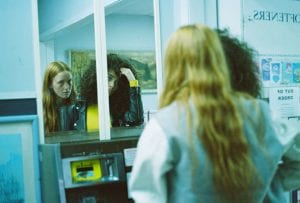



From: https://www.pinterest.co.uk/chrism2844/richard-billingham-rays-a-laugh/
Richard Billingham’s 2000 book ‘Ray’s a Laugh’ is an insight into Billingham’s very British home, taken in a very unforgiving, raw style, with the harsh flash and use of framing capturing your attention.
In an article from www.americansuburbx.com, Billingham says ‘It’s not my intention to shock, to offend, sensationalize, be political or whatever, only to make work that is as spiritually
meaningful as I can make it –in all these photographs I never bothered with things like the negatives. Some of them got marked and scratched. I just used the cheapest film and took them to be processed at the cheapest place. I was just trying to make order out of chaos.’.
This strong but simple quote provides some intriguing points – He was not trying to make a statement with his work or push a political agenda, he was simply documenting his life around him, as it happened.
As the work ages, it is considered a visual marker of life in the Midlands in the late 80s/ early 90’s. With vivid and overexposed hues of bright colours, alongside cigarettes, alcohol and body tattoos, the pictures provide a commentary on working-class civilians of the era. If the pictures were released nearly twenty years later however, they could be considered as what Jensen (2004) calls ‘poverty porn’. This is ‘media that exploits the poors’ condition’, and so with the Billingham family under the poverty line, it could be seen as exploitative. However, as the photos were taken by a family member and under no malicious intent – and so become an iconic discourse of early 90s family life.
Billingham’s attitude towards photography has inspired me to be spontaneous within my own style, considering the relationship between what/who I am photographing and the style of how I am photographing. The use of a point and shoot camera here is an advantage as it can be easily stored and carried.
I would like to attempt to provide a contemporary discourse on the lives of generation Z aged adults, having all recently moved from their childhood homes to live around the UK. I feel this is an age category overlooked and even ridiculed by the media, so I would like to produce a personal perspective.

From: https://clairemadden.com/hello-gen-z-author-claire-madden-daily-telegraph/





















